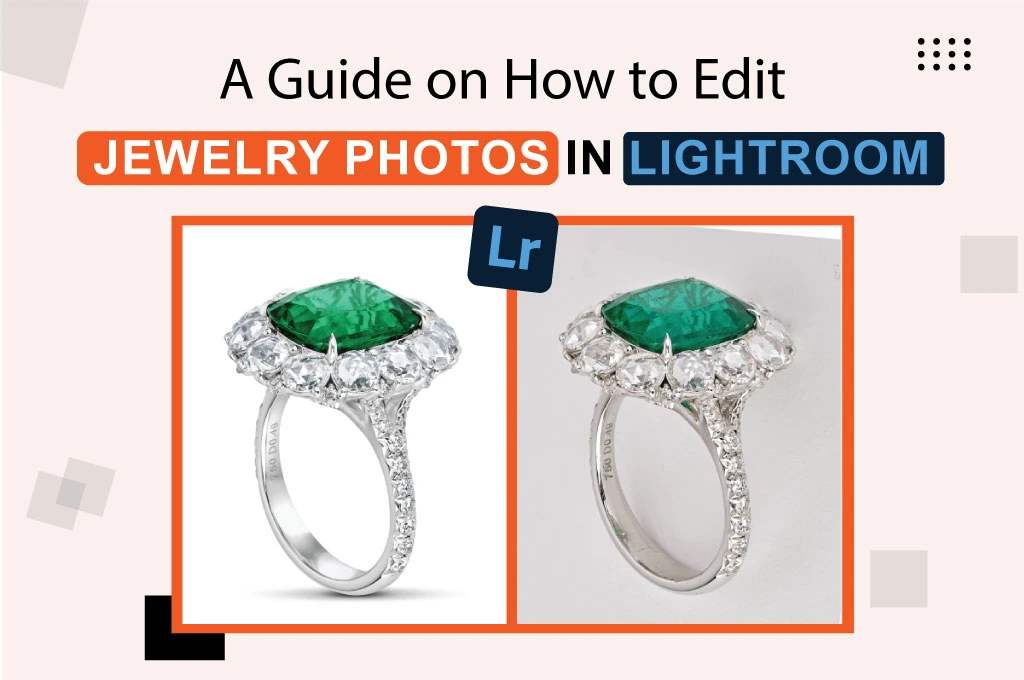Even after spending hours in your studio, your jewelry items may still have imperfections. They may have an unwanted background. Plus, you may have to adjust the contrast, shadows, reflections, and lighting. The key is presenting your ornamental items as well as possible without changing the original attributes. This post will give you a clear guideline on how to edit jewelry photos in Lightroom.
How to Edit Jewelry Photos in Lightroom Step-by-step
When it comes to enhancing the beauty of gemstone images, proper editing and retouching are a must.
Adobe Lightroom is an excellent photo editing software that gives ornamental photos a professional and attractive look.
Let’s learn step-by-step how to edit jewelry photos in Lightroom:
Step 01: Import The Image
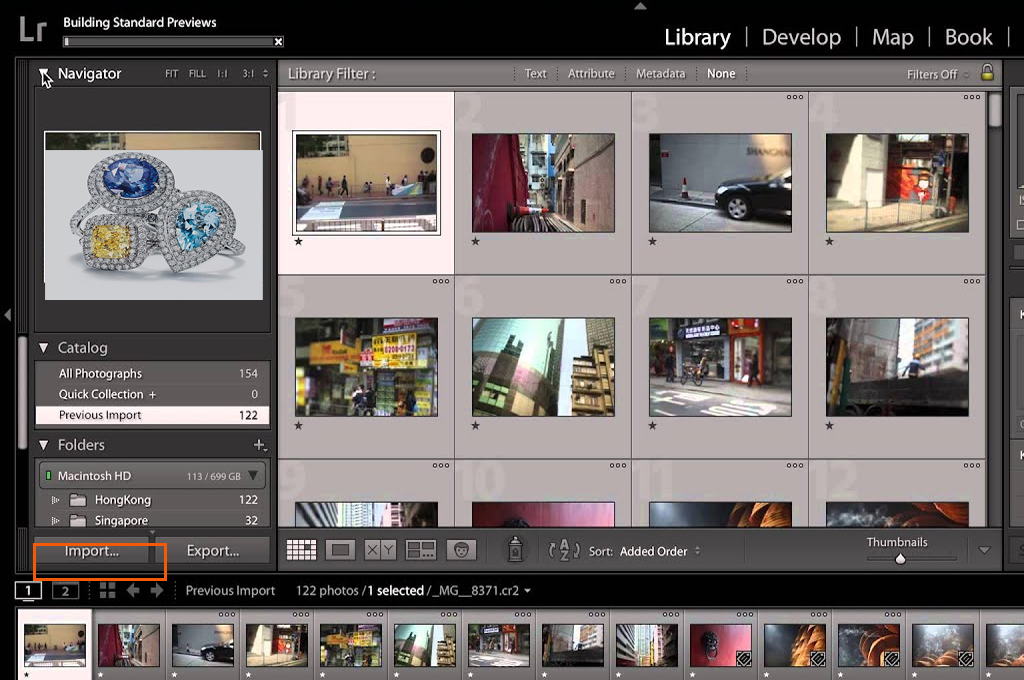
- Navigate to the Library module located at the top of your screen. If you don’t see the Library tab, tap on it to switch to the Library module.
- Then, choose your preferred trinket photo from the folder. Don’t forget to keep a duplicate file of your original ornamental image to avoid unwanted loss.
Step 02: Crop and Adjust the Angle
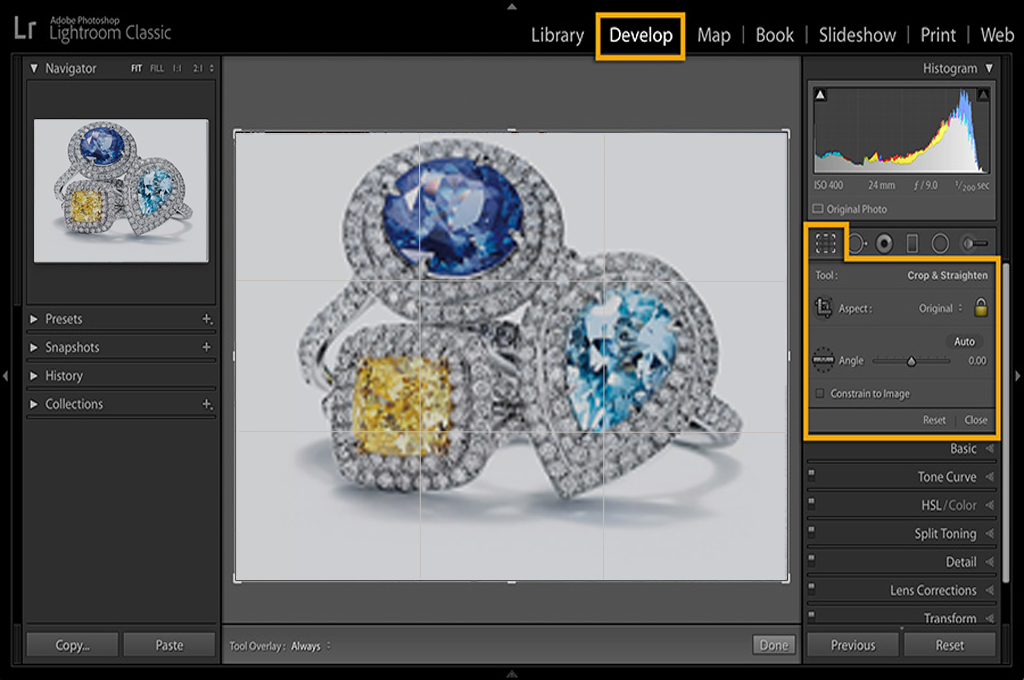
- After importing the gemstone photo, it’s time to crop it. Head to the Develop Module section and click on the Transform Panel.
- Then, press the ‘Auto’ button and let the system automatically correct the distortion, including both the vertical and horizontal axes in your photo.
- If it is still not enough, use the manual Crop tool from the Develop Module section. Make sure not to cut important elements. Use the Crop Overlay tool for further precise crop adjustments.
Step 03: Work on the Exposure
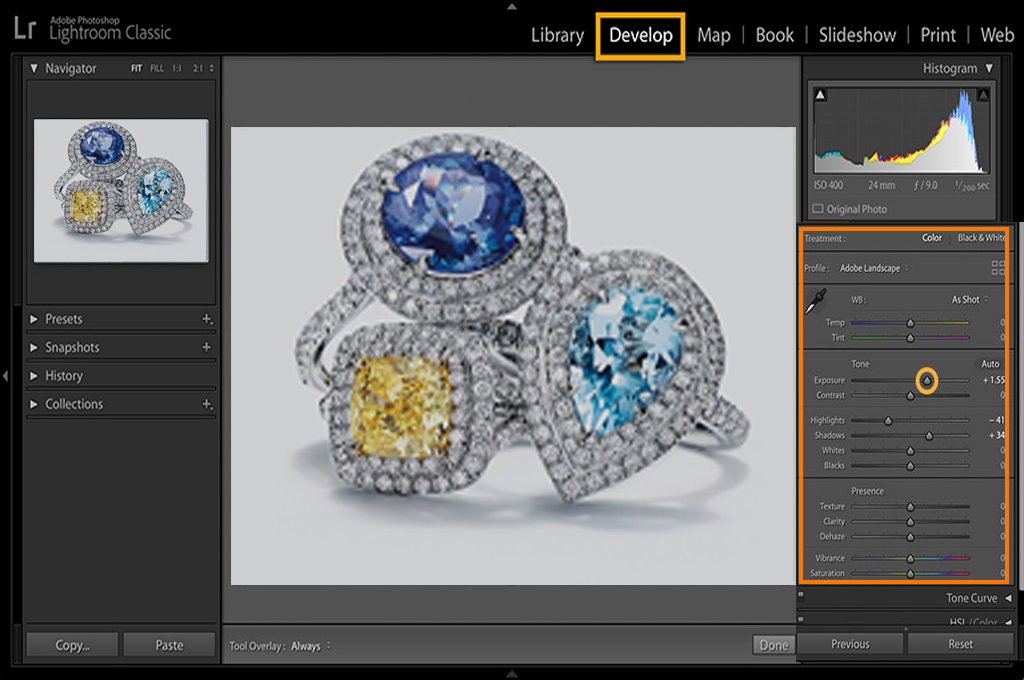
- Ornamental photos must have moderate exposure to highlight details without overexposing or underexposing.
- Visit the Develop module section and click on the Light panel option. Then, select the Exposure slider icon.
- Greg it to the left to reduce the brightness level and to the right to increase the brightness level.
You may also like to read… Photoshop vs. Lightroom: Best Choice for Photo Editing
Step 04: Adjust the White Balance

- Head to the Develop module area and then move to the White Balance section from the upper right corner zone. Choose the ‘Auto’ option from the drop-down list.
- If the result is not up to the mark, work further to adjust the white balance.
- Direct to the Color Panel area at the top section and select the Temp slider option. Drag it to the left or right to adjust the color balance of the bijouterie image. It also adds warmth or coolness in photos, ranging from gold to blue.
- Next, tap on the Tint slider to correct “off-axis” color balance issues. You can select the range from magenta to green.
Step 05: Adjust Shadows and Highlights
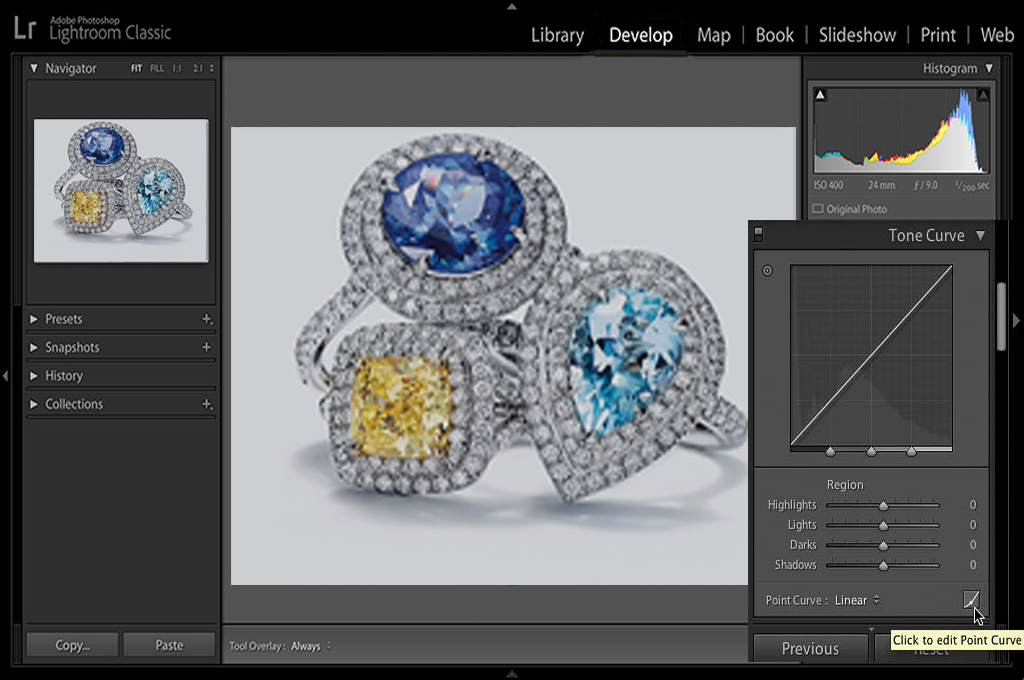
- When it comes to creating compelling precious stone images, rich shadows and bright highlights can add depth to photos.
- You have options to select from pure black to bright white. Choosing the right range is the key.
- Navigate to the Light panel and select the Highlights and Shadows slider.
- Move the slider right to brighten the shadow and make fine details in dark areas visible. Or move the slider left to darken the shadow and add contrast and depth to the photo.
Step 06: Refine Details and Sharpness
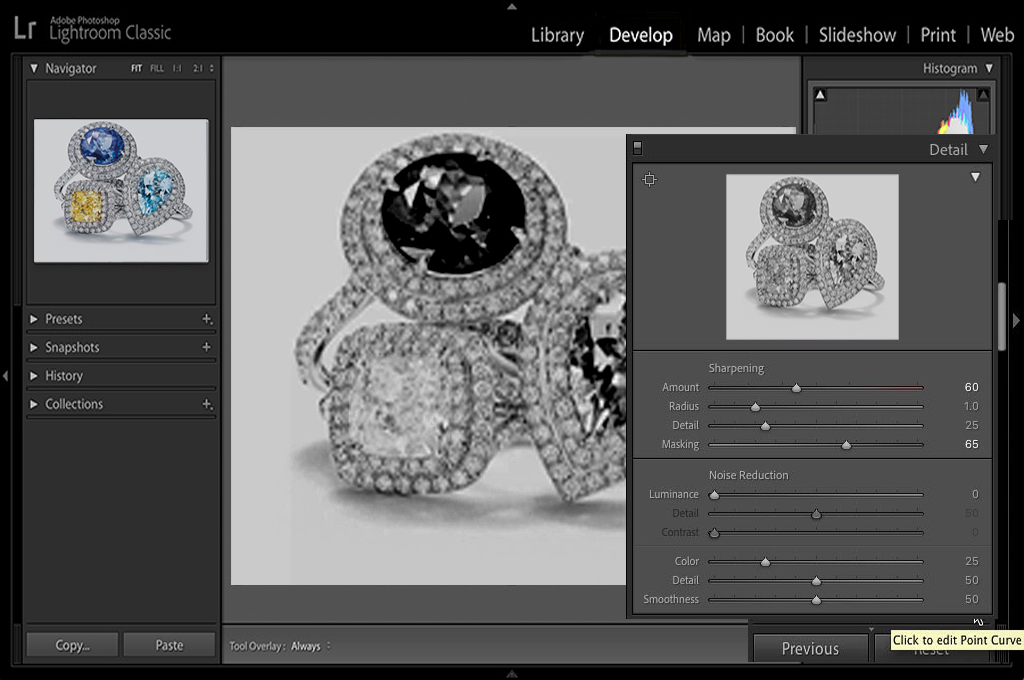
- Head to the upper-right corner of your toolbar section and click on the Edit icon. Then, select the Effects panel from the drop-down list.
- Finally, tap on the Clarity Slider and move the slider right or left to decrease clarity and create a softening effect or increase clarity and sharpness.
- If you want further refinement, use the Sharpening tool to add contrast to edges and create an illusion of detail.
You may also like to read… A Simple Tutorial on How to Extend a Background in Photoshop CC
Step 07: Eliminate Blemishes and Distractions

- Do your ornamental images have any blemishes or distracting elements in their background?
- Navigate to the Develop module below the Histogram tab and choose the Spot Removal tool. After turning on the tool, use it on a particular area and correct imperfections, such as small dust, specks, etc.
- If you want further retouching, use the Clone Stamp tool to remove distracting objects and create a consistent look throughout the trinket image.
- Make sure to save and export the photo once you are done editing it.
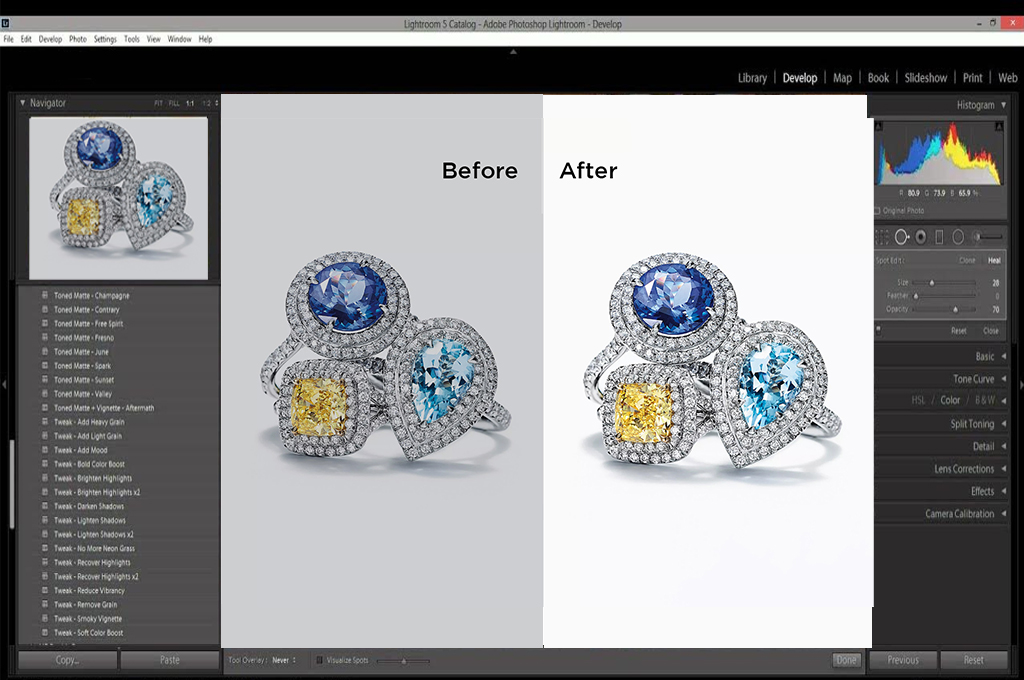
Conclusion
Before editing ornamental images, make sure to choose high-resolution photos for better editing and to save time and effort. Proper editing and retouching can help turn dull gemstone images into stunning ones. We have mentioned how to edit jewelry photos in Lightroom in 7 steps. If you still have any queries, feel free to ask.

